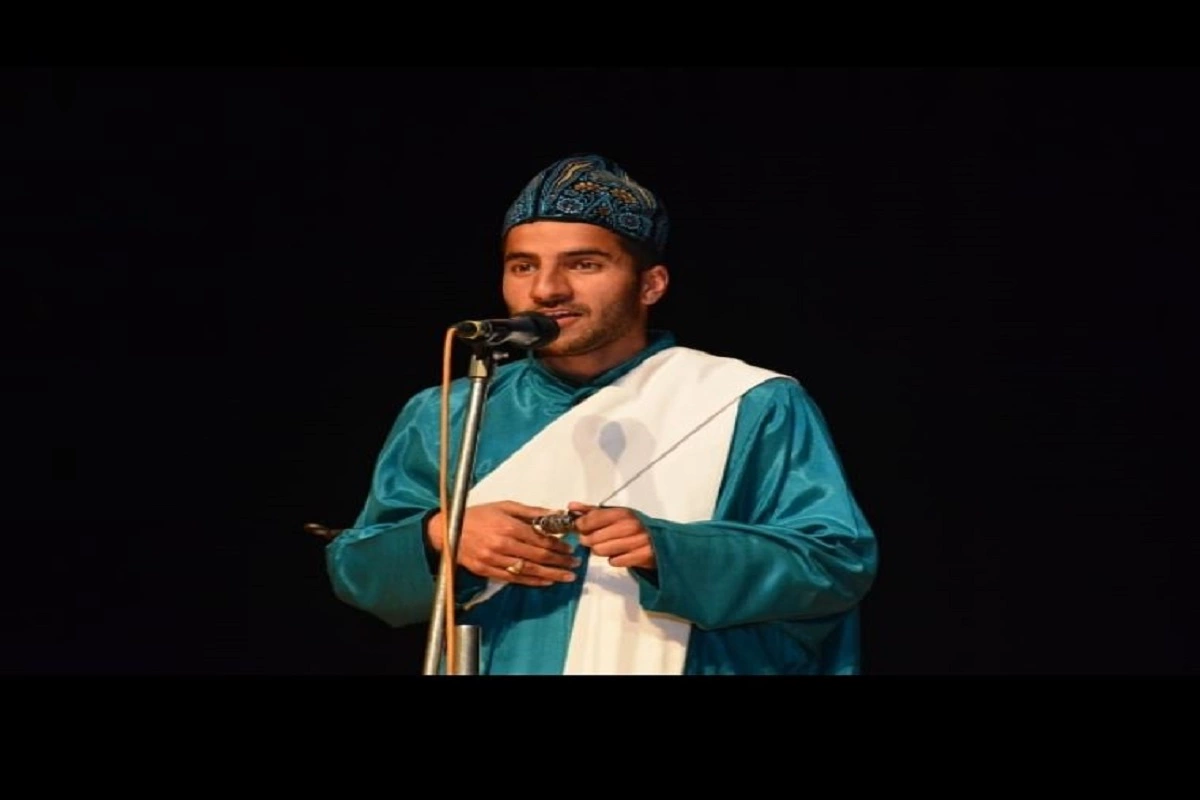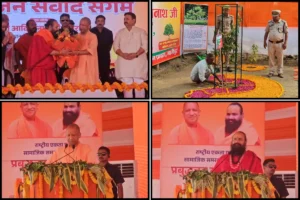
Ladishah, a storytelling musical genre of Jammu and Kashmir, is slowly and steadily dying. See, how a few youngsters are reinventing the old musical storytelling technique to preserve Kashmir’s age-old fading culture.
Since the 18th Century, Ladishah is a storytelling musical genre of Jammu and Kashmir that mostly used to focus on copying the songs or the folklores originally sung by minstrels–medieval European entertainers.
Dressed in Pheran, white trousers and a white turban, the Ladishah–a group of storytellers of Kashmir used to sing satire generally to express pain or joy with his musical instrument.
Ladishah would be supported by playing with an iron tong with small rings attached to it. Lately, with the introduction of new technology, this art of storytelling is fading away. However, a few youngsters want to preserve Kashmir’s dying legacy.
Tanveer Ahmad Bhat Alias Tanveer Fighter, a 22-year-old Ladishah, has cherished this brilliant form of art for decades.
“I have been performing Ladishah for more than 11 years”, says Tanveer.
Ladishah was confined to television and radio. It was one of the most popular art forms that people would fancy. Back in the days when there was no internet or social media, people would engross themselves with Ladishah.
Bhat hails from the Wathoora area situated in the Chadoora Block of central Kashmir’s Budgam district. He says that he’s been performing Ladishah not only for his survival but also to preserve the legacy of Kashmir.
“Ladishah is almost on the verge of extinction and I am doing it not only for my survival but to preserve the legacy of Kashmir,” said Bhat.
Further, he also said that his father has also been performing Ladishah for a major part of their livelihood.
“My 58-year-old father is still performing the Ladishah skit to earn the major livelihood for the family,” he said.
“In our area, several people were associated with the Ladishah; however, it has the least scoop and most of them left the profession and choose some other way to earn their livelihood. I am the only young person in our area who is still performing the Ladishah. I only survived because I write and recite Ladishah”, he added.
Ladishah, enriched with humour and satire, used to be very popular among the locals of Kashmir. However, with the adoption of new technology, the art form is on the brink of extinction.
Other than Bhat, Umar Nazir, the Kashmiri singer, has also come forward to rescue the Kashmiri culture of Ladishah which has almost come to a demise.
Nazir has recently sung a song in which he has created a fusion of modern rap and Ladishah. His main intention to sing this type of song was to preserve Kashmir’s centuries-old fading culture.
The 30-year-old said, “People were getting bored of listening to Ladishah traditionally. But I tried to give it a new twist by rapping it with the modern style.”
“Although, my sole purpose of singing the Ladishah was to convey a message to the people of Kashmir that we need to preserve and continue the legacy”.
He added further, “So far more than two lakh people have liked my Ladishah song on Youtube.”
In this way, by combining new technology, Nazir made his contribution to preserving the legacy.
Nazir further states that many people have chosen music as a profession and most of them want to safeguard the beautiful legacy of Kashmir.
According to Zareef Ahmad Zareef, the noted poet and historian of Kashmir, “A person performing Ladishah should have a good hold on the poetry who can play with words and should have a good knowledge of the poetic parameters of Ladishah.”
“Till 1990’s, there used to be folklore artists who would go from village to village to express their agony and pain. Among those, there were a group of people who used to perform skits known as Bhand Pather and used to entertain the rulers of that time. During the interval of the skit or the play, a Ladishah would come out to present its solo performance,” Zareef said.
Additionally, Zareef said, “The Ladishah would convey their problems to the king humorously through their performance without getting the King infuriated”.
Ladishah mastered the art of communicating with people in a humourous and satirical manner. The poet & historian also said that the Ladishah used to be an important part of the Bhandi Pather.
Zareef said, “In the harvesting season, the Ladishah used to collect the food and grains given to them by the farmers of the society which used to be the only source of revenue model for their livelihood.”
Source ANI
To read more such news, download Bharat Express news apps





















